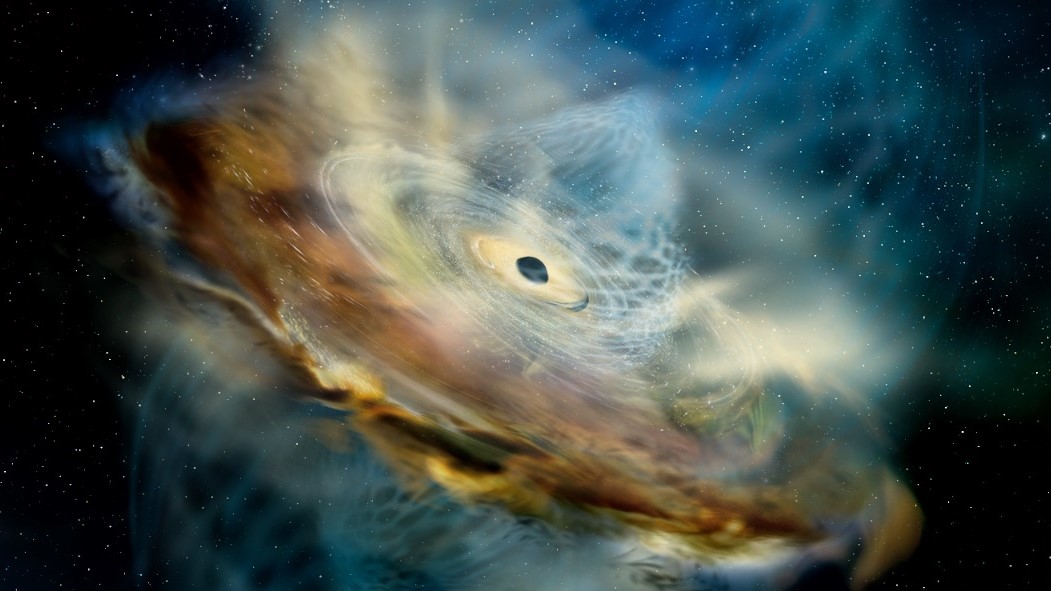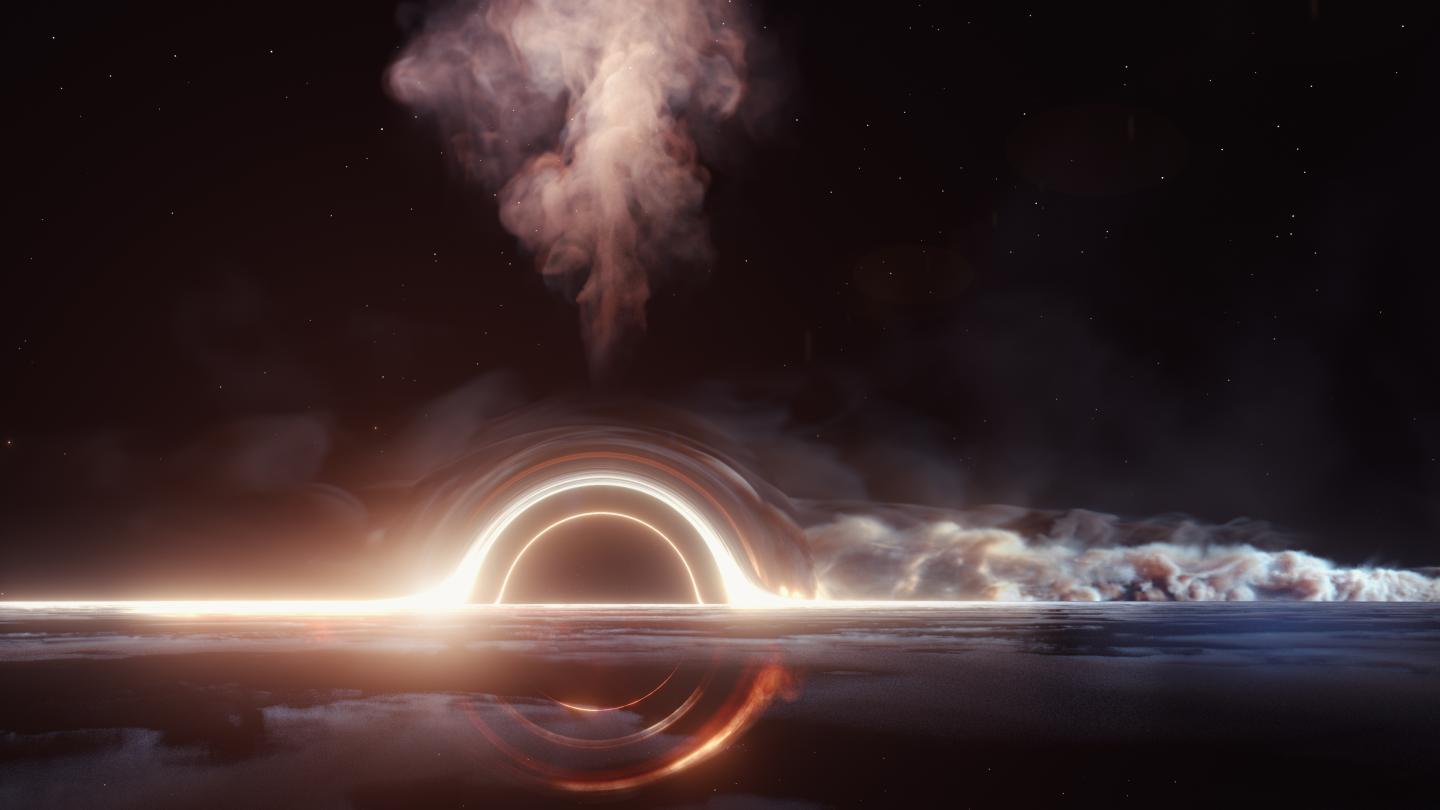Monster black hole might have executed a magnetic 'flip'
X-ray emissions disappeared and then came back again due to changes in the environment, a study suggests.
A black hole might have reversed its magnetic field right before our eyes.
The story begins with a galaxy known as 1ES 1927+654, which briefly ceased X-ray emissions for a few months, then resumed and increased. So far, the potential black hole observations represent a unique situation visible from 236 million light-years away.
"This event marks the first time we've seen X-rays dropping out completely while the other wavelengths brighten," study lead author Sibasish Laha, a research scientist at the University of Maryland, Baltimore County and NASA's Goddard Space Flight Center in Maryland, said in a NASA statement.
If scientists can confirm that the outburst was due to a supermassive black hole at the heart of the galaxy changing its magnetic field, the event may help astrophysicists understand how such a switch affects the black hole's environment, according to the statement.
Related: Eureka! Scientists photograph a black hole for the 1st time

The Milky Way (and most other large galaxies like it) have a supermassive black hole embedded at its heart; the black hole pulls matter in toward its center. The matter first collects in an accretion disc surrounding the black hole, then heats up and emits light (in visible, ultraviolet and X-ray wavelengths) as the matter is pushed inward.
As that matter pushes inward, it forms a cloud of extremely hot particles that scientists call a corona. The new study suggests that changes in the corona are what caused the X-rays streaming from the heart of galaxy 1ES 1927+654 to temporarily disappear.
Get the Space.com Newsletter
Breaking space news, the latest updates on rocket launches, skywatching events and more!

If a magnetic reversal took place, causing the north pole to become the south pole and vice versa, visible and UV light should increase toward the center of the galaxy due to more heating, as the corona begins to diminish and the accretion disk grows more compact in the center.
But as the flip evolves, the field weakens so much that the corona cannot be supported at all any more, causing the X-ray emissions to cease, researchers suggested.
That idea matches observations of this galaxy, as the X-ray emissions re-emerged in October 2018, roughly four months after they disappeared, suggesting a magnetic reversal took place. The galaxy returned to pre-eruption X-ray emissions in summer 2021.
Two space telescopes tracked the changes in ultraviolet and X-rays, including NASA's Neil Gehrels Swift Observatory and the European Space Agency's XMM-Newton satellite. Visible light and radio observations were performed from several ground-based telescopes in locations such as Italy, the Canary Islands and New Mexico.
A paper based on the research has been accepted for publication in The Astrophysical Journal and is available on preprint service arXiv.org.
Follow Elizabeth Howell on Twitter @howellspace. Follow us on Twitter @Spacedotcom or Facebook.
Join our Space Forums to keep talking space on the latest missions, night sky and more! And if you have a news tip, correction or comment, let us know at: community@space.com.

Elizabeth Howell (she/her), Ph.D., was a staff writer in the spaceflight channel between 2022 and 2024 specializing in Canadian space news. She was contributing writer for Space.com for 10 years from 2012 to 2024. Elizabeth's reporting includes multiple exclusives with the White House, leading world coverage about a lost-and-found space tomato on the International Space Station, witnessing five human spaceflight launches on two continents, flying parabolic, working inside a spacesuit, and participating in a simulated Mars mission. Her latest book, "Why Am I Taller?" (ECW Press, 2022) is co-written with astronaut Dave Williams.









